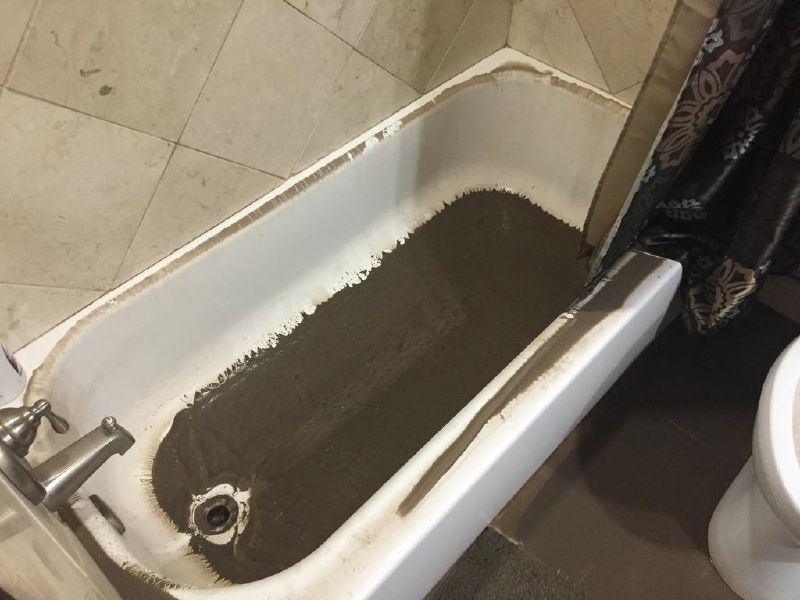Your Definitive Explanation: Drainage Coming Up Through the Bathtub
Your Definitive Explanation: Drainage Coming Up Through the Bathtub
Blog Article
Just how do you feel when it comes to What to Do if Sewage Starts Coming Up Through Your Bathtub?

Sewage back-up in the bathtub can be a stressful and unsanitary issue for any kind of house owner. Not just is it bothersome, but it likewise positions significant health and wellness threats and suggests underlying issues with the plumbing system. Understanding why sewer is coming up with the bathtub is essential for taking ideal activity to deal with the issue efficiently.
Intro to the Issue
Usual Reasons for Sewer Back-up
Clogs in the Sewage System Line
One of the most usual root causes of sewer back-up is an obstruction in the drain line. This can occur due to the accumulation of debris, grease, or foreign items in the pipes, protecting against correct flow and creating sewer to support into your bath tub.
Tree Origin Breach
Tree roots looking for moisture and nutrients can penetrate sewage system lines via little cracks or joints. With time, these roots can grow and increase, triggering substantial damages to the pipes and resulting in sewage back-up issues.
Comprehending the Problem
When sewage starts backing up right into the bathtub, it's a clear indicator of an issue with the water drainage system. The wastewater that should be streaming away from your home is instead discovering its way back into your living space, which can lead to substantial damage and health hazards.
Possible Reasons
Several variables can add to sewage back-up in the bathtub. From clogs in the drain line to concerns with the plumbing infrastructure, recognizing the source is necessary for finding a solution.
Aging Infrastructure
Older homes might have outdated plumbing systems that are much more susceptible to deterioration, splits, and wear and tear. As pipelines age, they end up being a lot more susceptible to leaks and blockages, increasing the possibility of sewer back-up occurrences.
Heavy Rainfall or Flooding
During durations of heavy rainfall or flooding, the drain system might become overloaded with excess water, causing back-ups and overflows. This can cause sewer supporting into bathtubs and various other components inside the home.
Signs of Sewage Back-up
Foul Odors
Unpleasant smells rising from drains or fixtures, particularly in the bathroom, might indicate sewer back-up issues. These smells are commonly solid and relentless, indicating a problem that requires immediate interest.
Slow Draining Fixtures
Bathtubs, sinks, and commodes that drain pipes gradually or otherwise whatsoever could be experiencing sewage backup. If numerous components are affected all at once, it's most likely that the concern stems from an usual point, such as the main drain line.
Gurgling Sounds
Strange gurgling or bubbling noises coming from drains pipes when water is running elsewhere in the house are a measure of air trapped in the plumbing system. This air accumulation can arise from sewage backup and should be explored without delay.
Wellness Threats Associated with Sewage Backup
Contamination of Supply Of Water
Sewer back-up can contaminate the water system in your house, posing a severe health danger to you and your family members. Exposure to contaminated water can cause stomach concerns, skin infections, and various other illnesses.
Mold Growth
Moisture from sewage backup can create optimal conditions for mold and mildew development in your house. Mold spores can intensify respiratory system issues and trigger allergic reactions in sensitive individuals, making punctual cleaning essential.
Spread of Condition
Sewer includes harmful germs, viruses, and bloodsuckers that can cause a variety of conditions, consisting of hepatitis, cholera, and gastroenteritis. Entering into contact with sewer or contaminated surface areas puts you at risk of infection.
Tidying up After Sewer Backup
Sanitation Procedures
Completely decontaminate and sterilize impacted areas after sewer back-up to eliminate unsafe bacteria and avoid mold and mildew development. Usage proper cleansing products and safety gear to guarantee risk-free and reliable clean-up.
Repair of Influenced Areas
Repair any type of damages to flooring, wall surfaces, or components triggered by sewer back-up. Relying on the level of the damages, you might require to change carpets, drywall, or various other products to restore your home to its pre-loss condition.
Immediate Actions to Take
Turning Off Supply Of Water
In the event of sewer back-up, it's necessary to turn off the water supply to stop additional contamination and damage. Find the main water shutoff valve in your house and shut it off till the problem can be fixed.
Contacting a Professional Plumber
Managing sewage back-up is not a DIY task. Call a certified plumber with experience in taking care of sewage-related issues to examine the situation and carry out essential repairs or clean-ups.
Staying Clear Of Contact with Infected Water
Until the sewage backup is solved, stay clear of contact with infected water to stop the spread of bacteria and microorganisms. Use safety equipment if you have to remain in the affected location and clean your hands extensively afterward.
Preventive Measures
Normal Maintenance of Sewage System Lines
Schedule normal evaluations and upkeep of your sewer lines to determine and address prospective concerns prior to they intensify right into major problems. This can consist of cleaning particles, examining for tree origin intrusion, and repairing any kind of damaged pipes.
Mounting Backwater Valves
Consider mounting backwater shutoffs in your plumbing system to avoid sewer from flowing back right into your home during periods of heavy rainfall or flooding. These shutoffs instantly close when water draws back up, protecting your home from contamination.
Correct Disposal of Household Waste
Prevent flushing anything aside from toilet tissue and human waste down the toilet to avoid clogs and clogs in the sewage system line. Dispose of oil, oil, and various other home chemicals properly to reduce the threat of plumbing troubles.
Why Is Water Backing Up in My Bathtub When I Flush My Toilet?
What to do about a sewer line clog
First, don’t bother with plunging. No amount of plunging will dislodge the clog in a sewer line. The clog is too far away. Plungers are for clogs in the toilet itself, not the sewer line. Plus, the most likely causes of a sewer clog are:
Tree roots Flushed toys or feminine products Grease buildup Those items don’t move easily. And in the case of tree roots, the roots need to be cut out of the pipe and the pipe will need to be repaired.
You’ll need a closet auger. A closet auger is a type of plumber’s snake with a protective cover to keep from scratching the delicate porcelain toilet. If the clog is further down, you may need to remove the toilet or use one of your cleanouts to get to the clog.
We also recommend doing a video inspection of the drain to ensure that the cause of the clog has been completely removed. Otherwise, you could have the same problem again in a few days or weeks.
https://mspplumbingheatingair.com/blog/why-is-water-backing-up-in-my-bathtub-when-i-flush-my-toilet

I'm certainly very interested by Why sewage is coming up through your bathtub and I am assuming you appreciated our entry. Sharing is good. Helping people is fun. Many thanks for taking the time to read it.
Book An Estimate Now
Report this page